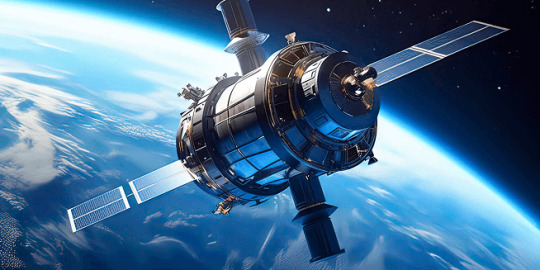#Global Position System
Explore tagged Tumblr posts
Text
fit and his ability to spot pac from literally miles away, or somehow, through fucking walls ???
#qsmp#fitmc#pactw#fitpac#qsmp clips#fit's vod happened to corrupt or something for specifically that last bit making it impossible to clip >:(#anyways fit got a gpps: global pac positioning system#or as a chatter put it: his gaydar.
1K notes
·
View notes
Text


#RelocationTime
Mountainous Parts of the Northern Hemisphere.
#Relocation Time#GPS#Global Positioning System#Fall Season#Autumn#Color Splash#Nature Photography#Landscapes#Mountains View#Hiking Trails#Altitude Life#ECCC#Environment and Climate Change Canada#NCC#Nature Conservancy of Canada#Mountainous Parts of the Northern Hemisphere#Canada#The RavenKeeper
522 notes
·
View notes
Text
Fundamental physics—let alone quantum physics—might sound complicated to many, but it can actually be applied to solve everyday problems. Imagine navigating to an unfamiliar place. Most people would suggest using GPS, but what if you were stuck in an underground tunnel where radio signals from satellites were not able to penetrate? That's where quantum sensing tools come in. USC Viterbi Information Sciences Institute researchers Jonathan Habif and Justin Brown, both from ISI's new Laboratory for Quantum-Limited Information, are working at making sensing instruments like atomic accelerometers smaller and more accurate so they can be used to navigate when GPS is down.
Continue Reading.
115 notes
·
View notes
Text


A comedy in 2 acts
#as#leftists continue to incoherently support a position identical to far right white nationalists’ but only towards jews#borders are insane EXCEPT if it’s jews crossing them then it’s colonialism sorry just fucking die I guess lol#there’s some post going around tumblr too that’s like remember we only have this global system of immigration restriction because countries#were trying to keep out jewish refugees and send them back to die but. that’s antizionism! that’s the position you claim to support!#it’s your position that the british firing on jewish refugees and detaining them in camps in Cyprus was based and anti colonial actually!#you can’t be an antizionist and also say global immigration restriction is immoral you only don’t realize this because you are that stupid#if all a far right movement has to do to get you to oppose immigration is call it colonialism how do you actually meaningfully disagree
8 notes
·
View notes
Text
SIRIUSXM SATELLITE RADIO GPS
#gps#SiriusXM#siriusxm#SIRIUSXM#GPS#GLOBAL POSITIONING SATELLITE SYSTEM#SATELLITE RADIO#SIRIUSXM SATELLITE RADIO#🛰️
20 notes
·
View notes
Text
concept that i started thinking of earlier today and am now irrevocably in love with: Cassandra Maps
in which. gorgug helps kristen launch a cassandra satellite. because of cass's space theme. and then cass gps. and cass maps. because she's there for people who are lost. you see my vision
#anyways was going through my drafts and read the first sentence and was like oh yeah cass cain and maps mizoguchi yeah people have been sayi#nope.#cassandra as in fantasy high and maps as in global positioning system
3 notes
·
View notes
Text
Satellites: Their Orbits, Tracking Systems, and Essential Uses

Satellites: Their Positions, Tracking, and Importance
Satellites have become an essential part of modern life, orbiting Earth and providing us with services ranging from communication and navigation to weather forecasting and space exploration. As of 2024, thousands of active satellites are circling our planet, each performing a specific role to enhance the quality of life on Earth. This article delves into the positioning of satellites, how they are tracked, what they track, and the significance of their roles.
Types of Satellite Orbits and Their Positions
Satellites are positioned in various orbits depending on their intended functions. These orbits determine how close the satellite is to Earth, how fast it moves, and what areas it covers.
Low Earth Orbit (LEO): Altitude: 180 km to 2,000 km Satellites in LEO include most Earth observation satellites, the International Space Station (ISS), and some communication satellites. These satellites are closer to the Earth, enabling them to capture high-resolution images. Functions: Used for imaging, remote sensing, and some communication purposes. Examples: ISS, Earth observation satellites like Landsat.
Medium Earth Orbit (MEO): Altitude: 2,000 km to 35,786 km Satellites in MEO are mainly used for navigation. This orbit offers a good balance between coverage and latency. Functions: GPS satellites and other global navigation systems. Examples: GPS, GLONASS, and Galileo satellites.
Geostationary Orbit (GEO): Altitude: 35,786 km above the equator Satellites in GEO move at the same rotational speed as Earth, meaning they stay fixed over one location on Earth. These are mostly communication and weather satellites. Functions: Used for television broadcasts, weather monitoring, and some types of communication. Examples: Weather satellites (GOES series), telecommunication satellites.
Highly Elliptical Orbit (HEO): Orbit shape: An elongated orbit with one point closer to Earth (perigee) and another point much farther away (apogee). Functions: Ideal for regions at high latitudes, providing prolonged coverage over areas like Russia and parts of Canada. Examples: Molniya satellites for communication in Russia.
How Satellites Are Tracked
The sheer number of satellites in space, combined with space debris, means tracking them is essential to avoid collisions and ensure their functionality. Ground stations and dedicated space agencies continuously monitor satellites. Several methods are used to track satellites:
Radar and Ground-Based Systems: Ground stations use radar to track satellites in LEO. These systems bounce radio waves off the satellite and measure the time it takes for the signal to return. By doing this repeatedly, they can track a satellite's location and speed.
Global Positioning System (GPS): Satellites in higher orbits like MEO or GEO are tracked using onboard GPS receivers. GPS helps calculate the satellite’s position and relay that data back to Earth.
Optical Tracking: Telescopes and cameras are used to visually observe satellites in higher orbits. This method is particularly useful for tracking objects that do not emit radio signals or need to be monitored for their physical characteristics.
Space Surveillance Networks: Agencies such as the U.S. Space Surveillance Network (SSN) and similar organizations in other countries continuously monitor satellites and space debris. They catalog objects and issue alerts for potential collisions.
What Satellites Track
Satellites are equipped with various sensors, cameras, and instruments to track a wide array of data on Earth, in space, and beyond:
Weather and Climate Data: Satellites such as NOAA’s GOES series monitor weather patterns, hurricanes, and long-term climate changes. They provide crucial data for meteorological services.
Earth Observation: Satellites like Landsat capture high-resolution images of Earth's surface. These images are used for mapping, agricultural planning, disaster response, and environmental monitoring.
Navigation Signals: GPS and other GNSS (Global Navigation Satellite Systems) satellites send signals that are used for navigation by smartphones, vehicles, ships, and airplanes worldwide.
Communication: Satellites facilitate global communication by relaying TV, radio, and internet signals across vast distances.
Space Exploration: Space telescopes like the Hubble Space Telescope track distant galaxies, nebulae, and black holes, helping scientists study the universe.
Military Surveillance: Many satellites are designed for defense purposes, tracking missile launches, military movements, or spying on potential threats.
Number of Satellites in Space
As of 2024, there are approximately 8,000 operational satellites orbiting Earth. The exact number fluctuates as new satellites are launched and old ones are decommissioned. Additionally, space agencies and private companies like SpaceX continue to launch large satellite constellations, such as Starlink, which alone has over 5,000 satellites in orbit for global internet coverage.
The Usefulness of Satellites
Satellites have become indispensable in modern life, serving a wide variety of purposes that impact everyday activities and critical global functions:
Key Functions of Satellites:
Communication: Satellites enable long-distance communication by transmitting data, television, and internet services. Without them, global broadcasting and real-time communication in remote areas would be impossible.
Navigation: Systems like GPS help millions of people navigate in real-time. They are also vital for the functioning of aviation, maritime travel, and even agricultural practices.
Earth Observation: Satellites provide high-resolution imagery of Earth, helping with disaster management, urban planning, agriculture, and environmental monitoring. For instance, they can track deforestation or observe glaciers' melting rates.
Weather Forecasting: Weather satellites provide the data needed for accurate predictions, storm tracking, and climate monitoring. This information is critical for preparing for natural disasters like hurricanes or floods.
Scientific Research and Exploration: Space telescopes and interplanetary satellites gather data on space phenomena, expanding our understanding of the universe. Satellites also conduct scientific experiments in the microgravity of space.
Defense and Security: Satellites are used for military surveillance, early-warning systems, and missile detection, playing a crucial role in national security.
Satellite Highlights in Brief:
Types of orbits: LEO, MEO, GEO, HEO, each serving different purposes.
Tracking methods: Radar, GPS, optical tracking, and space surveillance networks.
Data tracked by satellites: Weather, Earth observation, navigation signals, space exploration, and military surveillance.
Number of active satellites: Approximately 8,000.
Key roles: Communication, navigation, weather forecasting, Earth observation, scientific research, and defense.
In conclusion, satellites are essential tools for global communication, navigation, monitoring Earth's environment, and scientific discovery. As technology advances and the number of satellites continues to grow, their impact on our daily lives will only increase. Whether improving how we predict the weather, navigate through traffic, or explore the universe, satellites will continue to be a critical resource for humanity.
Go To How Satellites Work and What They Track
#satellite orbits#satellite tracking#satellite functions#low earth orbit#geostationary orbit#medium earth orbit#space technology#GPS satellites#communication satellites#weather satellites#Earth observation#satellite uses#satellite positions#how satellites work#space surveillance#satellite navigation#satellite networks#satellite importance#global navigation systems
7 notes
·
View notes
Text
Passion Seed

PassionSeed is not just a platform—it’s a movement. It’s where passion meets purpose, where creators are empowered to make a difference, and where audiences can engage meaningfully with content that inspires and uplifts. Whether you’re an artist, educator, entertainer, or innovator, PassionSeed invites you to join a community built on respect, creativity, and shared growth.
#PassionSeed#Authentic Content#Creative Community#Positive Platform#Purpose-Driven#Uplifting Media#Safe Space for Creators#Meaningful Engagement#Live Streaming#Content Creation#Creator Support#Viewer Interaction#Tips & Payouts#Bi-weekly Payout#Stripe Payments#Real-Time Engagement#Feedback Loop#Transparency#Fairness#Inclusivity#Empowerment#Integrity#Moderation System#Equal Opportunity#Community-First#Global Reach#Multi-language Support#Region-Specific Features#Cultural Diversity#Digital Empowerment
2 notes
·
View notes
Text
Oh man just when I thought I've seen it all here I come across a bunch of pro-isreal blogs calling the Irish juddenhassen and characterizing them as "drunk football hooligans cosplaying as Palestinian" ... Talk about having a shallow and deliberately dismissive understanding of a country's history. I can't possibly imagine the history or conflict that makes Palestine relatable to the Irish. Also the 'cosplaying' dig is hilarious because you definitely wouldn't respect them more if they were actually Palestinian!
#and like. i dont want to downplay antisemitism in amy country but like. wow super cool rascist charicature you conjured of the oafish#violent drunk stubborn low intelligence anamalistic Irish in response to them as a people sympathizing with another population that has#experinced occupation#like to be clear anti irish rascism is not a global killer or anything like the irish are largely considered white in the colonies and stuf#but like holy shit thats fucking ugly if how you respond to colonized people showing solidarity for each other is just instantly reverting#to every sterotype foisted on them to justify treating them as religiously primitive beligerants#mine#like im jsut posting i thought it was insane its not a big deal#anti irish attitude is not systemic anywhere outside of the Isles i was just like wow okay we are reaching into that bag out of rage at#palestinians being recognized as human#and the 'football hooligan' characterization is an especially disgusting way to react to like. federal leaders of the whole country having#position you dont like
7 notes
·
View notes
Text
Female Inventions (Day 3) Gladys West (Oct 27, 1930 - Present)

Born in Sutherland Virginia, inducted into the United States Air Force Hall of Fame, and played a vital role in creating the modern GPS system. Read more about Gladys West here and the creation of the GPS system here!
2 notes
·
View notes
Text
Brazil’s Education System: Progress Persistent Gaps
Official data from Brazil’s Ministry of Education and the Brazilian Institute of Geography and Statistics (IBGE) reveal a mixed picture for the country’s education system in 2024. While the nation has achieved near-universal enrollment for children aged 6 to 14, with 99.5% attending school, the story changes for older students and adults. Only 56% of Brazilians aged 25 or older have finished high…

View On WordPress
#Analysis:#annual#Awards#Brazils#Celebration#conflict#controversial#Economy#Education#Exclusive#feature#Gaps#global#Interview#live#Local#monthly#negative#persistent#politics#positive#progress#protest#rural#scandal#Science#Sports#System#Technology#Update
0 notes
Text
Laugh, it's World Laughter Day!
World Laughter Day, celebrated annually on the first Sunday of May, is more than a mere occasion for lightheartedness; it is a deliberate and profound initiative rooted in the vision of Dr. Madan Kataria, the esteemed founder of the Laughter Yoga movement. Image found on Internet Established in 1998, this day serves as a global clarion call, urging humanity to recognise and embrace the…

View On WordPress
#African Folklore#apana#Celebration#Comedy#connection#cortisol#Dr. Madan Kataria#endorphines#Energy#First Sunday of May#Funny#Global Event#Greek comedies#Happiness#Hasya#Humor#immune system#joy#Laughter Circle#Laughter Exercises#Laughter Yoga#meditation#Mental Health#mindfulness#Mudita#positive psychology#positivity#Raffaello Palandri#Shakespeare#stress
0 notes
Text
What is the Best B2b Support System for Global Trade?

Agencies rely more and more on B2B online marketplaces to connect with partners, suppliers, and customers across borders in the rapidly changing global landscape. The right assistance device might alter everything, enabling companies to improve productivity, broaden their customer base, and simplify processes. This article examines what makes the best B2B assistance tool for international trade and why it's essential for companies looking to succeed in the global marketplace. Read more: https://globaltradeplaza501.medium.com/what-is-the-best-b2b-support-system-for-global-trade-650d5d94fa16
#positive reviews of Best b2b online marketplace in global trade#best B2B support system in global trade#Trusted Partner in International Trade
0 notes
Text
This post is meant to spark discussion, not make people fight or to attack anyone, so please keep that in mind even if you don’t agree with everything I say. I’m not here to evangelize, just to give food for thought.
That being said, I’ve seen a lot of people recently propping up the “lesser of two evils” rhetoric on tumblr, and I am going to be honest: it very clearly comes from a place of fear. I understand, the political climate is frightening right now. But if we continue to approach the situation from a place of panic, prioritizing damage control, we are going to be slowly but surely overwhelmed by the amount of damage we are trying to control. We need to fight for overarching change.
Whether or not that change will come from the electoral system is debatable, but clearly voting is an exigent issue at the moment, so if you believe in that system and put your faith in it, I would urge you to consider voting for someone you don’t think is even a little bit evil. I’m not here to judge you if you’re not ready to do so this election cycle, because yes, I understand that actually getting a third-party candidate in the executive branch in 2024 is a long shot. But I really hope that if you truly want and believe in large-scale change, you have the ability to believe that even just the small change of electing a third party candidate is possible.
If you really agree that by-and-large, Democrat candidates are working against us (albeit less so than republicans), I would encourage you to work to make third-party candidates more viable instead of just accepting that you’re going to end up with a shitty politician either way.
There is plenty of time between now and the election after this one. If you want a non-evil candidate, I would urge you to do what you can to lay the groundwork for one now, so we don’t enter our next election cycle with the overwhelming sense that we have only two options and they both suck ass. The only thing standing between us and a third party win is the allure of habit and the work of organization. I would suggest you research candidates you actually like. Campaign for them, post about them, talk to your friends, family, and neighbors about them.
Every time the election cycle comes around again, we get thousands of new voters who aren’t in the habit of voting for the lesser of two evils, who may be ready for a non-evil candidate. There are many, many people who are dissatisfied with both parties. Electing a third-party candidate is not impossible, just difficult.
#even if third party doesn’t win the impact of talking about political issues and building community in your area will be a net positive#it’s something I’m trying to do more#a scary process but also one that can be fun and rewarding#start small and safe if you need to#maybe join a leftist group in your area or show up to a city council meeting#but please please do start instead of settling#we cannot afford to continue just reacting to human rights breaches as they arrive#or as they are most relevant to whatever marginalized group(s) we most identify with#we are all globally subject to vast systemic issues that the U.S. continues to perpetuate#we can’t afford to believe that people in power who do blantantly don’t care about Palestinians when it is profitable not to#will care about us when it ultimately becomes more profitable to allow us to die as well#I was voting blue no matter who last election cycle so I get it but it is so clearly not working#a blue president is in office rn and things are by and large just getting worse or being ignored
0 notes
Text
im so tired and im never going to understand the people on here who are still insisting that everything would have been the same under kamala as if the elimination of USAID and imperilment of PEPFAR hasn't already affected the lives of millions of HIV-positive people in the global south - as if biden wasnt one of the most proactive presidents on climate change, as if no connection exists between changing weather patterns, deaths from natural disasters in the world's poorest countries, food scarcity, and resulting political instability...it must feel exceptionally self-affirming to not have to think about environmental justice at all and to accept the gutting of protective acts and our legal systems that provided the recourse for brown and black people to prosecute big companies for poisoning their communities...must be incredible to inhabit a mindset where any collateral damage along the path to the fabled revolution doesn't matter
1K notes
·
View notes